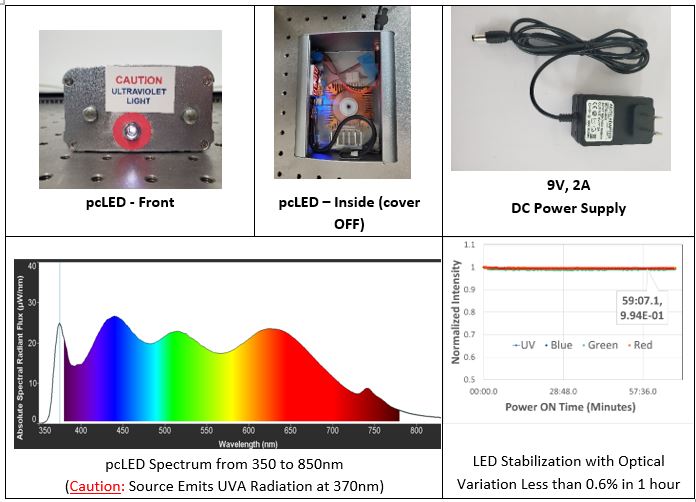UV/Vis/NIR spectroscopy is a scientific technique used to measure the reflectance, absorbance, or luminescent characteristics of a sample. When such optical properties are plotted versus wavelength, the resulting graph is called a spectrum or spectra (plural). The spectra can be used to determine the composition of samples, the color of samples, or how the samples interact with incident light across the ultra-violet, visible, or infra-red parts of the electromagnetic spectrum. UV-Vis and NIR spectrometers can also be used to build powerful analysis tools for the rapid quantification of analytes in solutions.
Studying UV/Vis/NIR optical properties requires the use of a light source and a spectrometer or a spectrophotometer. For decades, the UV/Vis/NIR lamp output and spectral shape has been limited by traditional light source suppliers and old lighting technologies such as tungsten, deuterium, xenon lamps, etc. With phosphor-converted LED (pcLED) technology, that’s no longer the case.
We can offer custom-made UV/Vis/NIR and/or SWIR light sources for a variety of fiber optic and spectroscopy applications. An example of such a phosphor-converted LED (pcLED) source is shown below. These pcLED sources are built using advanced solid-state lighting (SSL) technologies involving UV/Blue LEDs and proprietary phosphors extending from the ultraviolet to the infrared. The sources can be provided with or without fiber optic coupling adapters such as SMA905 or FC-PC.

Custom UV/Vis/NIR Spectroscopy pcLED Source